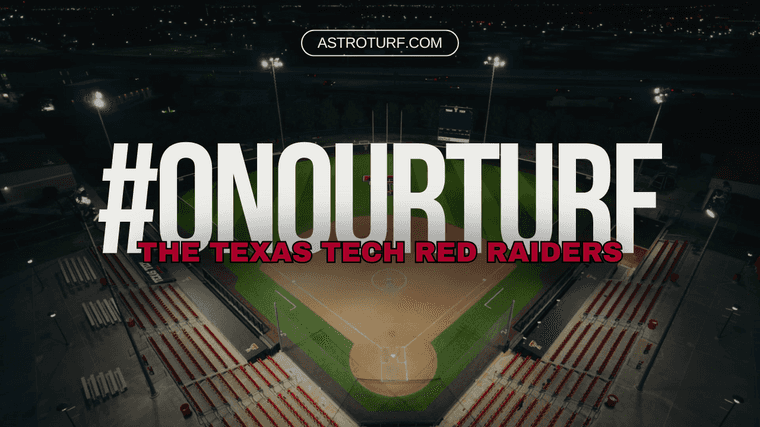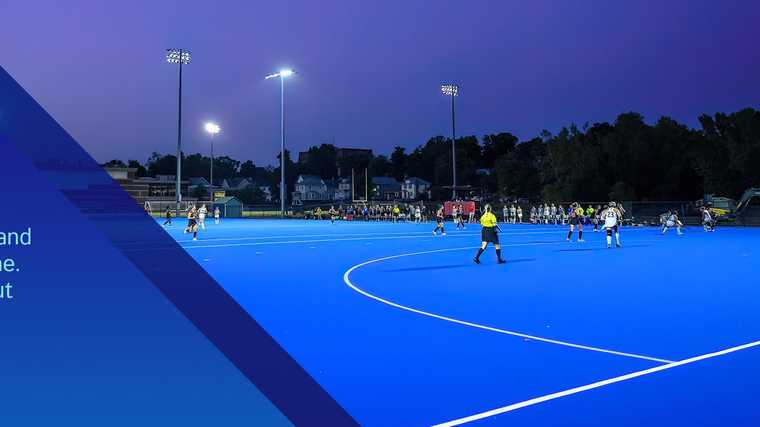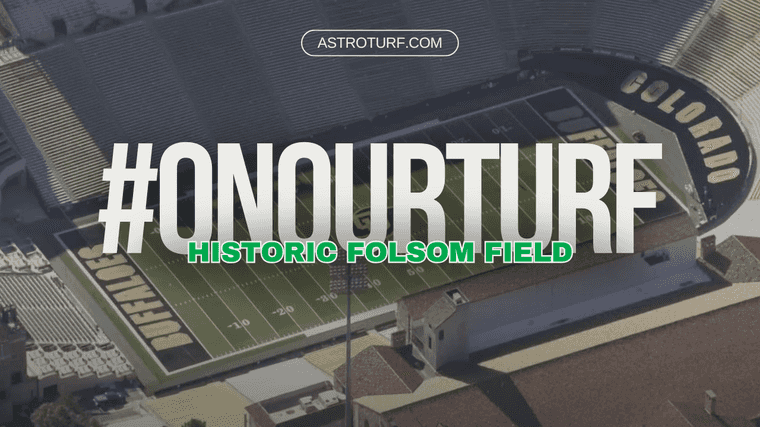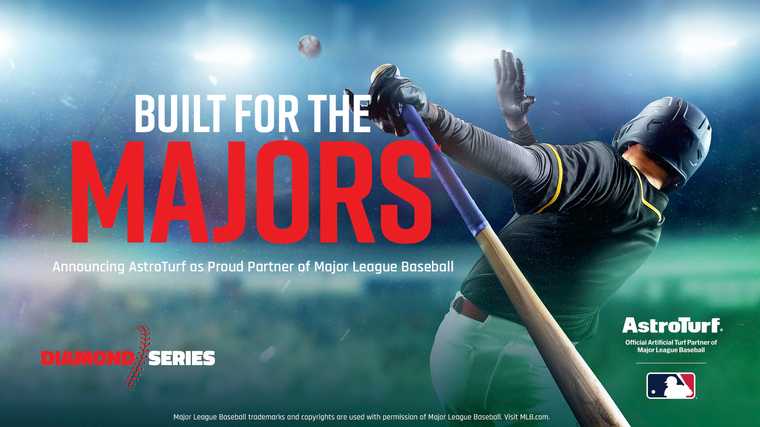San Antonio, TX – The Cole football team played its 2016 home games on a field that predated the invention of artificial turf. When the Cougars kick off their 2017 season Sept. 1, they will play on a surface that is ahead of its time in their home state.
Cole uprooted the natural-grass field it had used since 1963 and this summer has installed the most technologically advanced product made by AstroTurf — the same company that brought artificial playing fields to prominence when it covered the Houston Astrodome’s floor with a carpet-like surface in 1966.
Cole will use its “DT32” model that features a cushiony field with an infill made from zeolite, an organic, porous mineral that absorbs water and helps reduce surface temperatures.
“I think this is really the turf of the future,” Cole principal Isabell Clayton said. “It’ll be the first of its kind in Texas.”
Going from old-fashioned grass to new-age turf was part of a months-long overhaul, which had been on the district’s agenda for a decade. Because Fort Sam Houston ISD is located on federal property as part of Joint Base San Antonio-Fort Sam Houston, and does not collect property taxes like most public school districts, it had to wait until it was awarded Federal Impact Aid money from the U.S. Department of Education.
Clayton said government funds will cover $5.2 million of the $7.2 million cost. The rest comes from the school district’s general fund. Cole also installed a larger scoreboard and press box, LED lights, a new track and new bleachers — switching the home stands from the east side of the field to the west so they are no longer facing a setting sun.
A brick building behind the south end zone, which will include a concession stand, storage room, booster club room and changing room for officials, is scheduled to be completed in November.
Cole football coach John Reyes noted the old bleachers had some rotted wooden boards, the track was made of cinder and the lights had to be powered by a generator because of faulty wiring beneath the field.
“We had a thing I call a Band-Aids on top of Band-Aids kind of situation,” Reyes said. “It needed to be renovated.”
Incoming Cole senior Destinie Small, who plays volleyball and runs track, said some visiting students used the word “tragic” to describe the venue.
A cut above
Cole did not need to install the cutting-edge turf. Julie Novak, the chief financial officer for Fort Sam Houston ISD, said the product costs about $200,000 more than a standard artificial playing surface.
Clayton said the school selected AstroTurf’s top-of-the-line model because it wanted the highest-quality, safest surface for its students, military dependents who often transfer in or out of the district during their high school tenures. She said Cole administrators visited and studied several turf fields in the San Antonio area — including Jourdanton, which Clayton said uses an organic infill made of coconut shells and cork but requires watering and must periodically be replenished.
Clayton, Reyes and Cole athletic director Tina Guerrero even traveled to California to take an up-close look at DT32, which according to AstroTurf developer David DiGeromino was the brainchild of the City of Los Angeles Department of Recreation and Parks. DiGeromino said the city, unsatisfied with multiple artificial turf models it had used, wanted fields with more padding that required less maintenance, had cooler surface temperatures and were not made with the common infill of sand and recycled rubber.
DiGeromino said the city, which since 2014 has built about 25 fields covered with DT32, came up with the specifications for the turf and funded its development. The specifications are not proprietary to AstroTurf, which manufactured the turf and incorporated it into its product line.
“The beauty of this thing is it was not made up by the industry at all,” DiGeromino said. “It was made up by a client that was tired of the industry.”
The product’s “ZeoFill,” which is composed mostly of zeolite, is a lightweight, chalky substance with a dull green color that absorbs water and slowly dehydrates, creating an evaporative effect that cools the playing surface.
Jim Savoca, a regional vice president of sales for AstroTurf, said the on-field temperature can reach within 15-20 degrees of the surrounding air temperature. Although watering is not required to create the cooling effect, Savoca said it increases if water is applied.
Zeolite, composed of aluminum, silicon and oxygen, also is used for water purification and softening and possesses deodorizing qualities. It is found in some nutritional supplements as well.
“It’s really a funky material in that it has these great properties,” Savoca said. “That’s why they like it in California.”
Below the surface
Cole also likes its new playing surface because, according to Savoca and school administrators, it is better equipped to prevent head injuries compared to other types of artificial turf.
Savoca said the strands of artificial grass are shorter, but there are more of them and they are more tightly woven together, creating a denser, more forgiving field.
Beneath the 1-inch thick turf is a 1-inch layer of foam padding to provide extra cushion.
“Theoretically, you should have a lot less problems with any kind of concussions,” said Rich Allen, facilities manager for Fort Sam Houston ISD.
Lance Neal, the athletic director for Laguna Beach (California) High School, attested to the turf’s cooling and concussion-preventing qualities. The school installed DT32 before the 2016-17 school year, and Neal said there were no concussions caused by head-to-turf impacts in either football or soccer.
Neal said the turf plays faster than most because it is cut shorter. He also said it was more slippery, particularly in soccer, because most players were using plastic cleats on a surface made from plastic. Football cleats made of rubber provided better traction.
“We didn’t have a single complaint during football season. Everybody loved it,” Neal said. “There were no turf burns, none of that stuff. It played really, really well.”
DiGeronimo said the DT32 model has also been sold in Colorado, Florida, Georgia, Kentucky, Michigan, New Jersey, North Carolina and Pennsylvania.
“We think it’s a game-changer because of the uniqueness we’re selling,” Savoca said.
Clayton said Cole intends to show off its new field to the rest of San Antonio and the state. The school hopes to host district and regional track and field meets — Guerrero said it has not done so in at least 20 years — along with football and soccer playoff games.
Cole football player Josh Austin said the revamped stadium is “something that we can be proud of,” whereas the field used to be the butt of jokes among the Cougars’ opponents. Reyes said participation in the team’s summer workout program more than doubled compared to a year earlier, which he attributes in part to the excitement created by the renovation.
The turf comes with a 10-year warranty, but school administrators expect it to last much longer.
“We’re trying to think ahead. We’re trying to think of the future,” Clayton said. “If this (grass field) was here 60 years, maybe this next one will be, too.”










